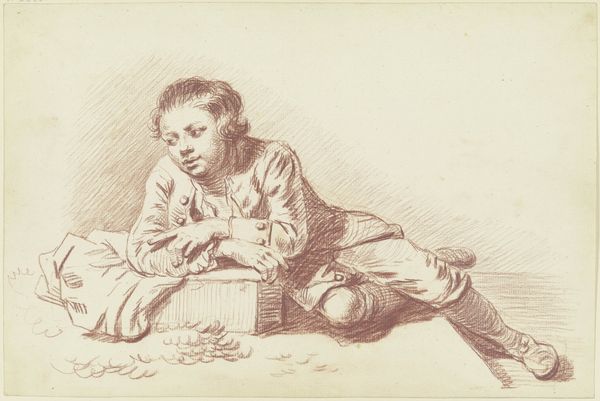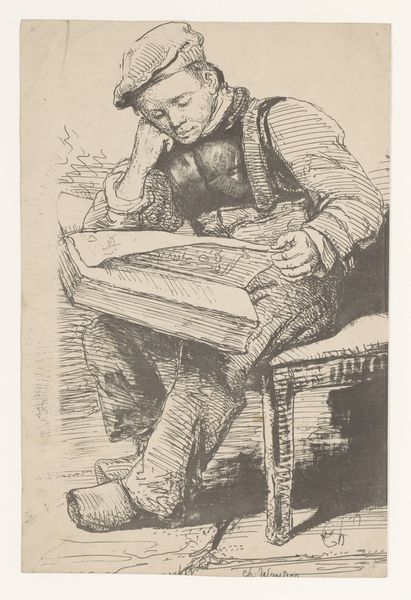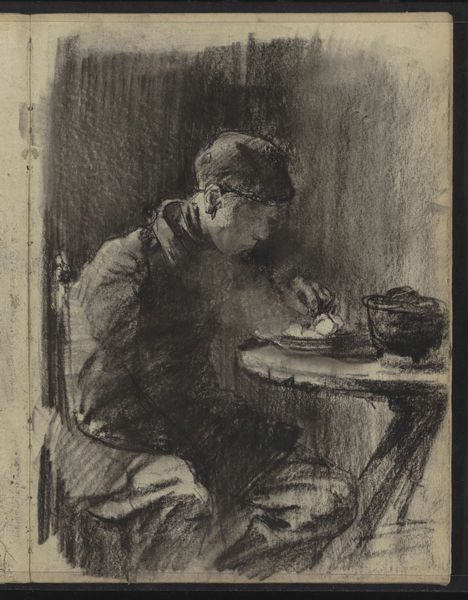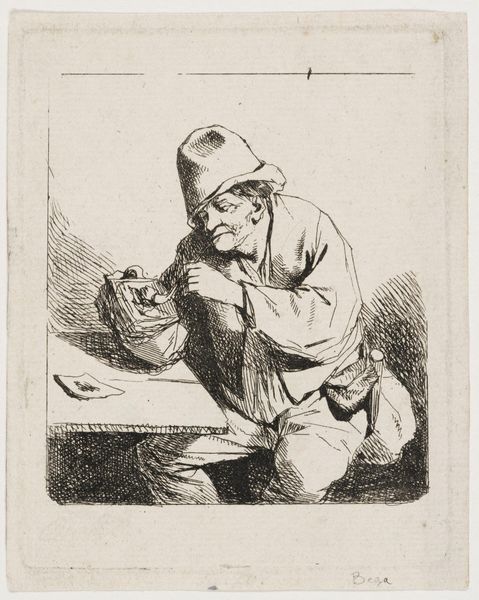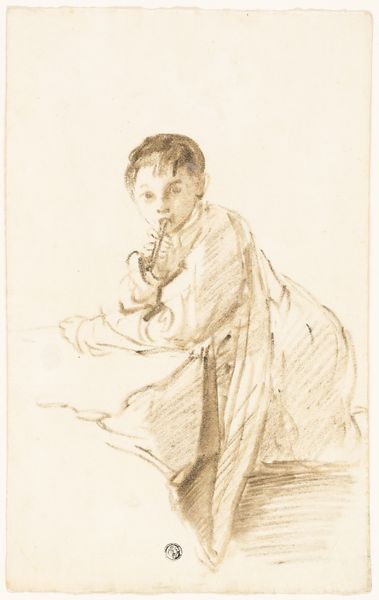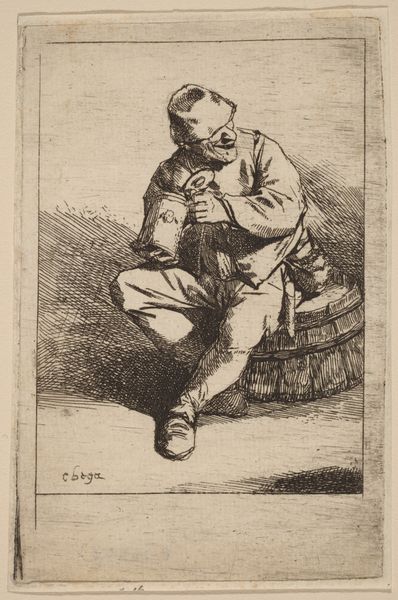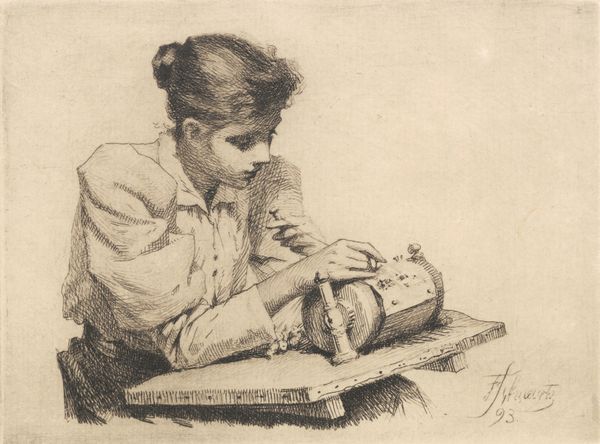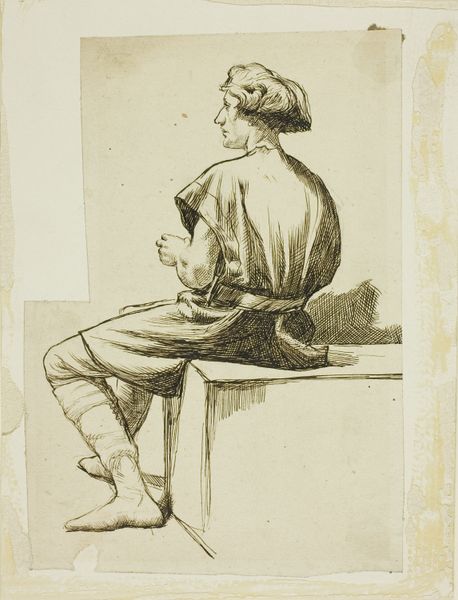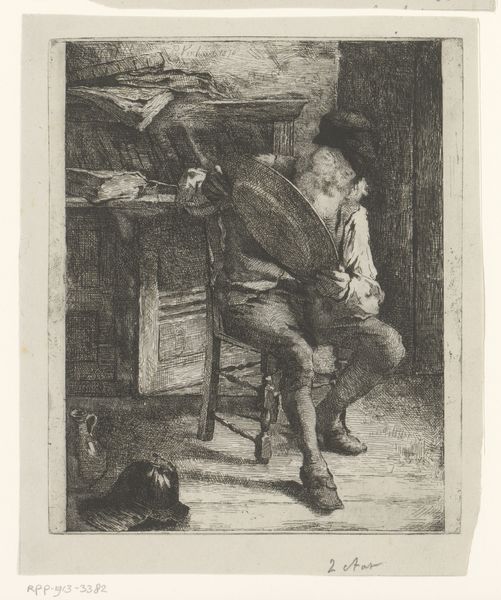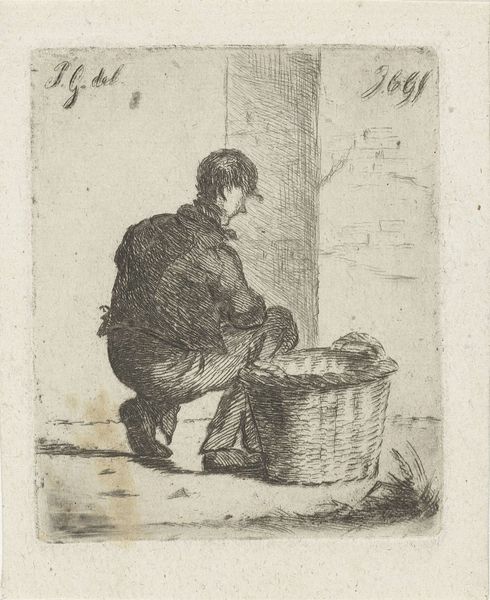
print, etching
#
portrait
# print
#
etching
#
portrait drawing
#
genre-painting
#
realism
Dimensions: plate: 22.5 x 14.7 cm (8 7/8 x 5 13/16 in.) sheet: 67.2 x 30.9 cm (26 7/16 x 12 3/16 in.)
Copyright: National Gallery of Art: CC0 1.0
Editor: We are looking at "Boy Eating Soup" by François Bonvin, an etching from 1861. It's a small work, yet incredibly intimate. The boy is completely absorbed in his simple meal. What visual elements strike you most in this piece? Curator: The density of line in relation to the implied light. Bonvin has created remarkable volume, particularly in the figure's coat and legs, simply through the concentration and direction of etched lines. Notice how the background is almost nonexistent, which forces our gaze entirely upon the figure. Editor: It does. It almost feels as though the figure is emerging out of the white. So you’re saying the arrangement of these etched lines are of primary importance here? Curator: Precisely. Observe how the composition relies almost entirely on the contrasting textures and tones achieved solely through the etching process. The formal arrangement creates the emotional impact. Where do you think this emphasis leads us? Editor: It encourages us to look beyond the simple subject and see the artist's mastery of technique, wouldn't you say? It isolates the act of creation and how line becomes form. Curator: Indeed. The stark simplicity forces us to contemplate the method itself, the act of transferring an image through such a demanding medium. It underscores the artistic process as central to our understanding of the work. Editor: I had not considered the degree to which the medium informs the message. Curator: A close examination of form reveals the essence of the work itself. It is about seeing, more than simply what is seen. Editor: Thank you for the enlightening conversation. It highlights how focusing on the form reveals hidden layers of meaning.
Comments
No comments
Be the first to comment and join the conversation on the ultimate creative platform.
